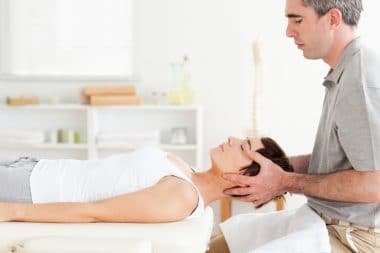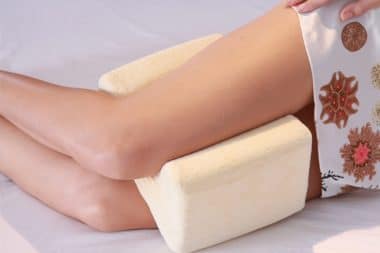Children and older adults are vulnerable to spine problems. Do you usually feel a tingling sensation or numbness in your arm, hand, foot, or leg? Or do you have problems maintaining balance, walking, or controlling urination and bowel movement? Are you bothered by worsening neck pain or back pain? If your answer is yes, you probably have spinal stenosis.
Learn more about spinal stenosis and its different types by reading below.
What Is Spinal Stenosis?
Spinal stenosis refers to the narrowing of one or more spaces of the spine (or spinal canal), causing reduced space and compression of the nerves. This medical condition usually affects the nerves in the neck and the lower back.
To diagnose this condition, you need to see a specialist. You can start by searching spine specialist Idaho Falls online, for example.
Types Of Spinal Stenosis
Spinal stenosis can affect different parts of the spinal canal. The different types of spinal stenosis include cervical stenosis (affecting the neck), thoracic stenosis (middle back), and lumbar stenosis (affecting the lower back). This article will discuss each type below:
1. Cervical Spinal Stenosis
Cervical stenosis refers to the narrowing of the spine space in the neck. The cervical spine has seven vertebrae located between the head and the chest. With this condition, the spinal canal narrows and squeezes the nerve roots, which can ultimately damage the spinal cord.
Causes Of Cervical Stenosis
The common cause of cervical spinal stenosis is the changes in the spinal canal’s size and shape. This condition is most common among people above 50 years old. Aging can cause bulging of spongy vertebral discs (found between the bones of the spine) and the thickening of ligaments or tissues that connect bones.
A variant, congenital cervical stenosis, can also be acquired by birth. The patient develops the condition while still inside the womb. This is due to an abnormality in bone development.
Signs And Symptoms Of Cervical Spine Stenosis
Cervical stenosis doesn’t show signs and symptoms until the nerves or the spinal cord become compressed. Many people have spinal canal stenosis but don’t present signs and symptoms until much later.
Over time, a patient may feel the following:
- Weakness or numbness in the neck, hands, shoulders, arms, or legs.
- Coordination and balance problems, like tripping or shuffling while walking.
- Loss of bladder or bowel control.
2. Lumbar Spinal Stenosis
Lumbar spinal stenosis or lumbar canal stenosis refers to the narrowing of the spinal column through which, the nerves communicate in the lower back. The condition typically occurs because of changes associated with aging.
Lumbar stenosis decreases the spinal canal’s size and restricts the movement of the spinal vertebrae out of alignment. Narrowing of the side canals that protect the nerves results in pinching of the nerve root. It irritates the nerves more as the canal diameter further narrows.
Causes Of Lumbar Spine Stenosis
The cause of spinal stenosis in the lower back or lumbar spine is usually associated with degenerative changes of the spine or spondylosis that occurs due to aging. Spondylosis refers to a type of arthritis caused by degeneration of the disc, joints, and bone spur growth on the vertebrae. These changes impair the movement of the spine, affecting the nerves and other body functions.
Lumbar stenosis can also be caused by infection, trauma, history of spinal surgery, or metabolic conditions. This spine condition can be also present at birth (congenital spinal stenosis).
Signs And Symptoms of Lumbar Spinal Stenosis
The general signs and symptoms of lumbar stenosis include pain, numbness, and weakness in the legs, hips, buttocks, lower back, and groin. Increased pain in the legs is the primary symptom of lumbar stenosis.
Worsening of symptoms occur when the patient is standing or walking. Symptoms might decrease when sitting, leaning slightly forward, or lying down for about 5 to 10 minutes. Patients with lumbar spinal stenosis feel comfortable at rest. However, they cannot walk far enough without feeling leg pain. Excruciating leg pain is caused by spinal nerve root involvement.
The signs and symptoms of lumbar stenosis develop gradually, which can worsen over time and become debilitating. The common manifestations of lumbar spinal stenosis usually include one symptom or a combination of any of the following:
- Neurogenic or Pseudo Claudication: Neurogenic claudication (pseudo claudication) refers to increased pain in the legs when walking, which significantly affects daily activities. Because of the spinal cord’s compression, pain affects both legs when standing or walking for a prolonged period. Neurologic deficits include leg weakness and numbness, loss of coordination, and gait imbalance.
- Lumbar Radiculopathy: Because the nerve root is compressed or irritated, it leads to tingling, numbness, or weakness, starting from the lower back down to the buttocks and the leg. This condition may also be referred to as Sciatica.
- Radicular Pain: Lumbar stenosis causes radicular pain, where the nerve root is compressed or irritated, resulting in leg pain. The pain travels down (due to lower back nerve involvement) from the lower back into the groin and buttocks, extending to the leg on one side.
Types of Lumbar Spinal Stenosis
There are different types of lumbar stenosis, this includes the following:
- Foraminal Stenosis: This refers to the narrowing of the nerves protected by the bony openings (foramina) of the lower spine.
- Central Canal Stenosis: The narrowing of the spine encroaching on the spinal canal.
Complications Of Lumbar Stenosis
Cauda equina syndrome is one of the major complications of lumbar spinal stenosis. Cauda equina refers to the nerves located at the end of the spine, resembling a horse’s tail. It extends from the spinal cord to the lumbar spine and the sacrum (triangular bone found at the base of the spine) down the back of the legs.
The cauda equina has ten pairs of nerve roots combined to form larger nerves such as the sciatic nerve. It is responsible for the motor and sensory nerve supply of the lower limbs and the pelvis that contain organs for bladder and bowel function.
Compression of the cauda equina due to lumbar spinal stenosis can damage it, causing severe signs and symptoms that may develop quickly. This condition is a medical emergency requiring urgent surgical intervention. Adverse effects occur when cauda equina syndrome is not treated immediately, such as the following:
- Paralysis
- Impaired Bladder and Bowel Control
- Difficulty Walking
- Other Physical and Neurological Problems
3. Thoracic Stenosis
Thoracic spinal stenosis is the narrowing of the spinal canal and squeezing of the spinal cord’s nerve root. It affects the middle back or thoracic area.
Causes Of Thoracic Stenosis
Like cervical stenosis and lumbar stenosis, thoracic stenosis can be caused by aging, congenital abnormality of the vertebrae, and trauma.
Signs And Symptoms Of Thoracic Stenosis
Patients may experience the following signs and symptoms of thoracic stenosis:
- Neck Pain or Stiffness.
- Numbness of the Arms, Hands, and Shoulders
- Difficulty Standing or Walking
- Foot Drop
- Sciatica
Serious signs and symptoms would also include loss of bowel and bladder control or incontinence. If this happens, contact your doctor right away.
Diagnosis Of Spinal Stenosis
Diagnosing any type of spinal stenosis requires a complete physical assessment and discussion of the patient’s medical history. Doctors usually order several imaging tests such as X-rays and CT scans to determine the cause of signs and symptoms.
The following procedures may be required by your doctor to determine spinal stenosis:
- X-Rays: The doctor will order an X-ray of the back to reveal bony changes. Bone spurs (overgrowth) can be shown through an x-ray, including the narrowing of the spinal canal.
- Magnetic Resonance Imaging (MRI): This imaging study utilizes radio waves and a powerful magnet, producing cross-sectional spine images. MRI can detect damages in the vertebral discs and ligaments, including tumors. It can show the location of the nerves in the spinal cord being compressed in spinal stenosis.
- Computed Tomography (CT Scan): This imaging study combines X-ray images obtained from many different angles, producing detailed, cross-sectional spine images.
- CT Myelogram: This imaging study help reveals herniated disks, tumors, and bone spurs.
Medications
Spinal Stenosis cannot be cured through oral medications, but the symptoms can be managed or relieved through the following:
- Pain Relievers: The common medications to help relieve pain associated with spinal stenosis include ibuprofen (like Advil or Motrin IB), naproxen (like Aleve), and acetaminophen (like Tylenol). These pain medications can be used to ease discomfort temporarily.
- Antidepressants: Chronic pain can be managed with nightly doses of amitriptyline and other tricyclic antidepressants (TCAs).
- Anti-Seizure Drugs: Your doctor may prescribe anti-seizure medications, such as pregabalin (Lyrica) and gabapentin (Neurontin) to help relieve pain associated with damaged nerves due to spinal stenosis.
- Opioids: For intense pain, medications containing codeine-related drugs or opioids can help. Some examples of opioid medications include oxycodone (Roxicodone and Oxycontin) and hydrocodone (Vicodin and Norco). While patients improve with opioids, they only provide short-term pain relief.
Surgical Procedures
For long-term relief from spinal stenosis, a surgical procedure is necessary. This includes the following:
- Laminectomy: This decompression surgical procedure removes the lamina or back part of the affected vertebra, easing the nerve pressure by creating space around them.
- Laminotomy: This surgical procedure removes a portion of the lamina, carving a hole big enough to relieve nerve pressure in a specific spot.
- Laminoplasty: This surgical procedure opens up space in the spinal canal to create a hinge on the lamina. The surgeon bridges the spine’s open section by using metal hardware.
A minimally invasive surgery is also available for patients with spinal stenosis. This procedure removes lamina or bone to reduce further damage to surrounding healthy tissue. However, this may not be effective for everyone. Talk to your doctor to know which surgical procedure or treatment is best for your particular spinal condition.
Frequently Asked Questions About Spinal Stenosis
Now that you have a general idea of what spinal stenosis is, including its cause, effects, and treatment, you might still have a few questions in mind. Don’t worry, you’re not the only one. Below is a compiled list of questions that are frequently asked by many people about spinal stenosis.
- Is it possible for different types of stenosis to occur at the same time?
The two types of lumbar stenosis can occur together and cause overlapping signs and symptoms. Lumbar stenosis can also occur in conjunction with cervical spine stenosis of the neck or thoracic spine stenosis involving the middle back. This condition is called tandem stenosis.
- Is it possible to have a combination of symptoms of spinal stenosis?
The location of spinal stenosis dictates the combination of signs and symptoms. Neural elements, including the spinal cord, spinal nerve roots, and the nerves descending from the spinal cord (cauda equina), may get compressed, which leads to a combination of signs and symptoms. The patient may feel weakness, pain, numbness, or tingling in the lower body, manifested by difficulty in walking.
- Does spinal stenosis always present signs and symptoms?
No. Spinal stenosis can be asymptomatic or not presents any signs and symptoms during its early stages.
- Is lumbar stenosis serious?
Lumbar spinal stenosis rarely leads to serious complications. However, you should see your doctor immediately when the narrowing compresses the spinal cord or surrounding tissues. The signs and symptoms would include intolerable lower back pain, burning leg pain, progressive leg weakness, inner thigh numbness, anal numbness, urinary retention, and loss of bladder and bowel control.
- Does physical therapy help relieve signs and symptoms of spinal stenosis?
Yes. Patients with spinal stenosis become less active because basic physical activity worsens pain. However, inactivity can lead to more pain and muscle weakness. Physical therapy is crucial to help build up endurance and strength or maintain the spine’s stability and flexibility that can improve balance.
- What is decompression in spinal stenosis?
Your doctor can recommend a decompression procedure for lumbar spinal stenosis. This procedure involves needle-like instruments to remove a part of a thickened ligament to increase the spinal and nerve root encroachment space.
- What is the prognosis of spinal diagnosis?
Patients can experience relief from the pain and symptoms of spinal stenosis with non-surgical treatment. If the condition worsens, especially with age, non-surgical treatments become less effective. By then, surgery is the most viable treatment option.
Conclusion
Spinal stenosis involves the narrowing of space between the nerves, compressing the spinal cord in the spinal canal in the process. The nerves that travel through a certain body part are compressed, causing numbness, tingling sensation, weakness, pain, paralysis, and other signs and symptoms.
The different types of spinal stenosis include cervical spinal stenosis (neck) and lumbar spinal stenosis (lower back). A combination of these types may occur, causing overlapping signs and symptoms. However, various types of medication and surgery are now available for patients who need relief and treatment.








Reply